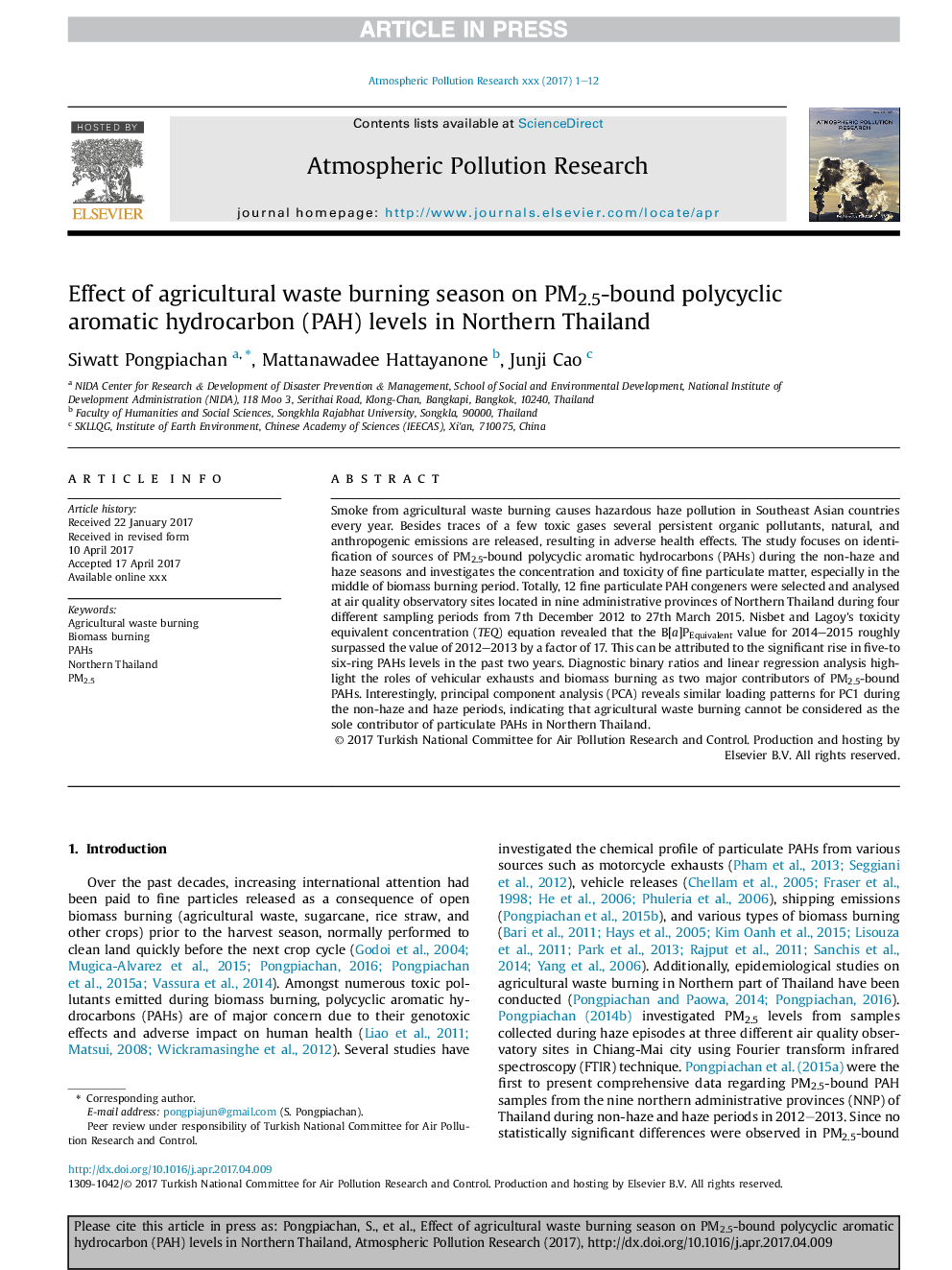| Article ID | Journal | Published Year | Pages | File Type |
|---|---|---|---|---|
| 8862691 | Atmospheric Pollution Research | 2017 | 12 Pages |
Abstract
Smoke from agricultural waste burning causes hazardous haze pollution in Southeast Asian countries every year. Besides traces of a few toxic gases several persistent organic pollutants, natural, and anthropogenic emissions are released, resulting in adverse health effects. The study focuses on identification of sources of PM2.5-bound polycyclic aromatic hydrocarbons (PAHs) during the non-haze and haze seasons and investigates the concentration and toxicity of fine particulate matter, especially in the middle of biomass burning period. Totally, 12 fine particulate PAH congeners were selected and analysed at air quality observatory sites located in nine administrative provinces of Northern Thailand during four different sampling periods from 7th December 2012 to 27th March 2015. Nisbet and Lagoy's toxicity equivalent concentration (TEQ) equation revealed that the B[a]PEquivalent value for 2014-2015 roughly surpassed the value of 2012-2013 by a factor of 17. This can be attributed to the significant rise in five-to six-ring PAHs levels in the past two years. Diagnostic binary ratios and linear regression analysis highlight the roles of vehicular exhausts and biomass burning as two major contributors of PM2.5-bound PAHs. Interestingly, principal component analysis (PCA) reveals similar loading patterns for PC1 during the non-haze and haze periods, indicating that agricultural waste burning cannot be considered as the sole contributor of particulate PAHs in Northern Thailand.
Related Topics
Physical Sciences and Engineering
Earth and Planetary Sciences
Atmospheric Science
Authors
Siwatt Pongpiachan, Mattanawadee Hattayanone, Junji Cao,
